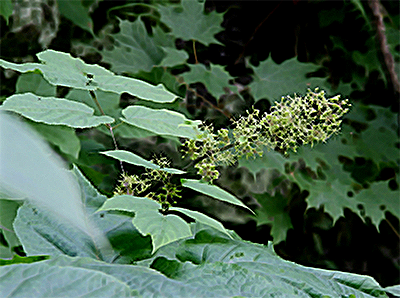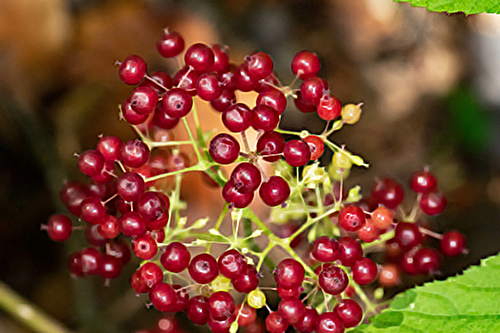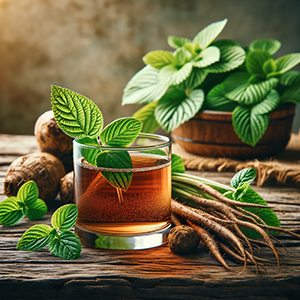Contents
The powdered root of the American spikenard plant is helpful for coughs, asthma, and rheumatism. If taken before labor, it can make childbirth easier. Native Americans used the herb to treat backaches. For external applications, they would pound the root into a pulp and use it for poultices. It can be used for inflammations, bruises, swelling, skin problems, and wounds. Fomentations of the plant can be placed over the chest to remedy internal pains.

The plant can reach forty-eight inches in height with beautiful foliage. The greenish-white small flower clusters grow in the summer, while their showy clusters of small red-purple berries grow in the fall. The American spikenard plant is also called the Life-of-Man plant. The large roots of spikenard, at times referred to as “Nard,” are aromatic and spicy.
Spikenard root’s flavor is like milder licorice. Native Americans were among the first to use it as a medicinal herb. Eventually, early settlers came to use the root to treat various symptoms and health conditions. American spikenard herb is also known to grow in the wild. It prefers medium-wet rich soil and partial shade to full sun. However, the not-that-tasty berries produced in the fall can be consumed. The birds love them and happily eat them up.
Whenever in season, the berries make it easy to distinguish this plant. It has a ginseng-like facade, and the stems are dark maroon to black. The leaves are enormous, dark to light green colored, and have heart-shaped, oval leaflets with pointed tips and toothed margins.
NOTE: The American spikenard plant is a close relative of sarsaparilla. Another herb is “spikenard” (Aralia nudicaulis), or wild sarsaparilla; its medicinal properties are similar to sarsaparilla.

American Spikenard Plant Scientific Facts
1. Scientific name—Aralia racemose.
2. Parts of the plant used medicinally—Rootstock and roots.
3. Properties—Stimulant, expectorant, and diaphoretic.
How to use
1. Infusion—Steep for one to two teaspoons of powdered rootstock and roots in one cup of water and take one to two cups daily.

Spikenard Seeds – How to Grow
The spikenard plant seeds need to be scarified and stratified. Use a file to scratch the seed coat surface. All that is required is a slight light abrasion. Get some moistened peat moss to place the seed, seal it, and refrigerate it in a container for forty to sixty days. Periodically check if additional moisture is needed.
After performing these tasks, sow the spikenard plant seeds indoors. Later you can transplant the plant to your herb garden once the first true leaves have developed. Another way to sow the seeds is to put them directly into the garden in the late fall. The elements and cold weather will serve to stratify and scarify the seeds.
DISCLAIMER: All content on this website is presented solely for educational and informational objectives. Do not rely on the information provided as a replacement for advice, diagnosis, or treatment from a qualified medical expert. If you are pregnant, nursing, or have any preexisting medical concerns, talk to your doctor before using any herbal or natural medicines.
REFERENCES
- Vance Ferrell Harold M. Cherne, M.D. The Natural Remedies Encyclopedia [Book]. – Altamont, TN: Harvestime Books, 2010. – Vol. Seventh Edition: 7: pp. 181.
- Native American Ethnobotany Database: http://naeb.brit.org
- Go Botany (Native Plant Trust): https://gobotany.nativeplanttrust.org/species/aralia/racemosa
- The Native Plant Gardener: https://nativeplantgardener.ca/american-spikenard
- Prairie Moon Nursery: https://www.prairiemoon.com/aralia-racemosa-spikenard
